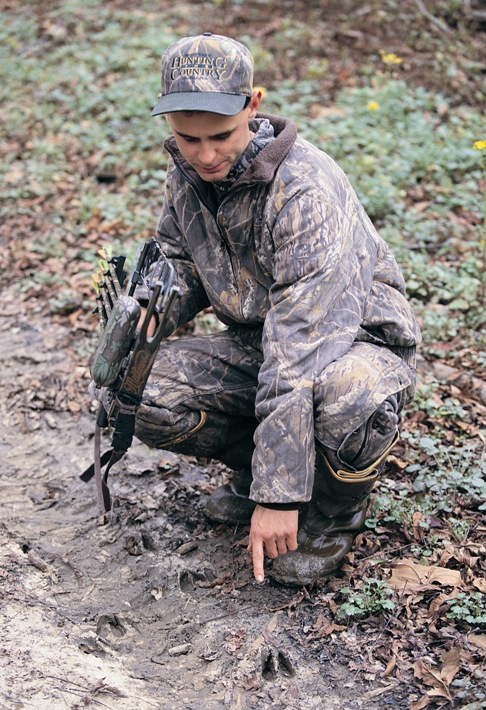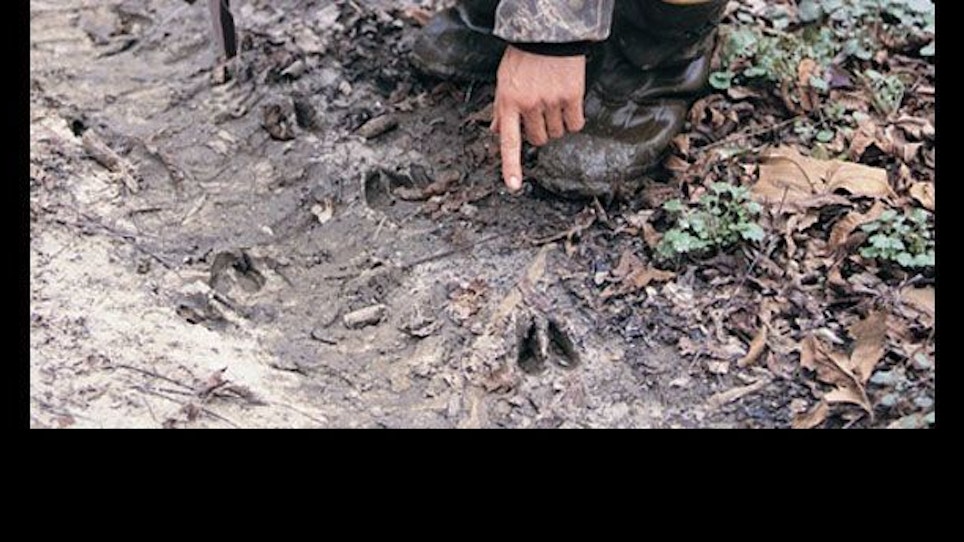I was fired-up big time when I went to the mailbox and found the coveted out-of-state whitetail tag I’d been trying to get for years. That’s when it hit me. Although I had two full weeks to bowhunt, I had no extra time to do any scouting. In fact, I would have to narrow my 10-county tag down to a large farm or two, and then hunt the area cold—a tall order in anyone’s book.
How can you find a hotspot on property you have never even set foot on before? Well, if you rely on traditional scouting methods, you probably can’t. But if you keep your wits about you, and learn to power scout, you might just get a toehold on some new hunting grounds.
Step 1: Ask The Right Questions
 The first step in power scouting is to narrow your search to a specific county or township. You can start by contacting the state’s natural resources office by mail or the Internet requesting the most recent deer-kill figures. Study the county-by-county statistics. If you are looking for just any buck, zero-in on those counties with the highest deer take.
The first step in power scouting is to narrow your search to a specific county or township. You can start by contacting the state’s natural resources office by mail or the Internet requesting the most recent deer-kill figures. Study the county-by-county statistics. If you are looking for just any buck, zero-in on those counties with the highest deer take.
“However, if you are after a better-than-average buck,” says Allen Miraglia, noted whitetail expert and staff shooter at Great Lakes Outfitters Archery Shop in Williamson, New York, “then your chances might be better in one of the counties with a lower reported deer kill. Bucks often grow older here simply because of reduced hunting pressure. You can also double-check the Pope and Young and the Boone and Crockett record books as well as available state Big Buck Clubs to learn how many trophies have been tagged in each of those counties.”
Then talk with anybody that is outdoors a lot and might be familiar with the whereabouts of the local deer herd. Your goal is to get some idea how many deer are nearby, how big they are, and where they seem to be concentrated. Landowners are a good choice, but forest rangers, proprietors of archery shops and the local game warden can also be helpful.
My first choice is the wildlife biologist who works out of the state’s regional natural resources office. These men and women are a deer hunter’s best friend. In fact, I have never had a conversation with one of these pros where I didn’t learn something I could put to good use later in the field!
Begin by asking for a general forecast of the upcoming season, and a date for the peak of the rut. Then inquire about the general health of the herd. For example, are the dressed weights of both sexes indicative of a balanced herd, or one that is badly out of whack with the available food supply? What is the buck-to-doe ratio?
This will get you on the right track, but don’t stop there. Ask how this year’s mast crop compares with last year’s. Will there be a bumper crop of apples, acorns and beechnuts, or will the crop be spotty? How will this spring’s early frost or summer’s drought effect this fall’s yield? Did the last mast crop help bucks enter the winter in good shape? What about the mast crop two or even three years ago? Did a surplus of yearling animals emerge from that following spring healthy and strong? If so, this could indicate a bumper crop of 3.5- or 4.5- year-old deer this season. How has the total snowfall in recent years affected the deer herd? Did the deer yard up earlier than unusual? Was there enough of a crust to support predators like coyotes and free-roaming dogs? Was a dead-deer survey conducted in known yarding areas?
If you hope to bowhunt farm country, ask the biologist about the amount of public versus private land, the degree of hunting pressure, and the whereabouts of any large parcels of property that seem to inhibit regular hunter access such as swamps, steep ravines and thick brushy hill sides. How has the weather affected spring planting and fall harvest schedules? Heavy rains in the early fall for example may have impeded corn and soybean harvesting, leaving more cover for bucks, and more food for the winter months. You might want to inquire about the prevalence of blue tongue disease in parts of the Mid and Far West.
If you have your heart set on a wilderness hunt, ask the biologist about the onset of winter, preferred winter foods, and the possibility of tracking snow during the open season. While you are at it, ask about the location of clearcuts, beaver dams, and natural meadows, all key deer hunting spots. What does he or she have to say about the age structure of the herd? About antler beam diameters? Has logging destroyed some of the better thermal cover areas? If so, you can bet deer numbers may have dropped in the area. What about access to some of the more remote regions? Will you need a 4x4?
Next: Maps, Maps And More Maps






